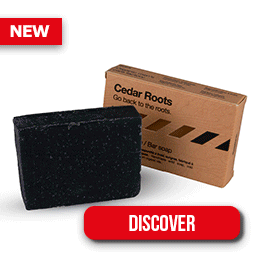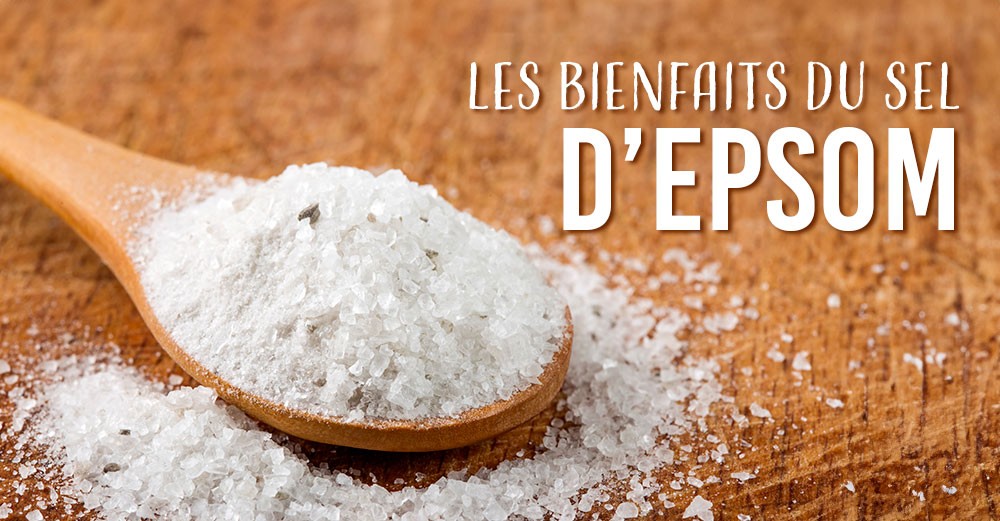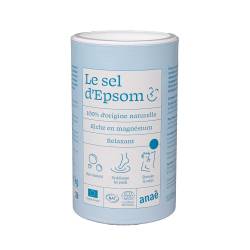Table of Contents
In the quest for well-being and health, it is sometimes surprising to learn that the most effective remedies are hidden behind simple and natural products. And Epsom salt is one of them! This mineral, little known to the general public, has a multitude of benefits for the body.
In this article, we will explore the origins, uses, and advantages of this natural product.

What is Epsom Salt?
Epsom salt, also known as magnesium sulfate, gets its name from the spa town of Epsom in England. Although used since antiquity, it was in the 17th century that Epsom salt became popular thanks to its thermal springs rich in magnesium sulfate. This mineral is said to relieve skin diseases and muscular pains.
Contrary to what its name might suggest, it is not really a true salt (like the one used in cooking). It is a mineral compound naturally present in seawater or in certain underground sources. It comes in the form of small, odorless white crystals that dissolve very well in water. Its chemical composition, based on magnesium and sulfur, makes it an ally for our health and well-being.

Benefits of Epsom Salt
Epsom salt has numerous health and well-being benefits. With just one product, you have various uses:
- Relieves muscle pain: Thanks to its relaxing properties, Epsom salt helps relieve muscle pain, cramps, and soreness. Adding Epsom salt to a warm bath helps relax the muscles and promotes recovery after exertion.
- Relieves stress: The magnesium present in the salt is absorbed by the skin, helping to relax muscles and soothe tension. It helps you to feel more relaxed.
- Aids sleep: Taking a bath with Epsom salt promotes deeper and more restful sleep (thanks to magnesium).
- For foot or nail fungus: Epsom salt serves as a carrier for diluting essential oils.
- Restores flexibility and vigor to hair: Epsom salt helps remove hair product residues, excess sebum, and many accumulated impurities. It allows your hair to breathe better and promotes growth.

Other Uses of Epsom Salt
Epsom salt also has benefits for your plants and vegetables:
- Epsom salt in gardening: Epsom salt provides nutrients to the soil and protects seeds from various insects. Pour a handful of Epsom salt at the base of your plants. When you water, the water will penetrate the salt into the soil, enriching it.
- Maintaining plant leaves: Dilute 1 tablespoon of Epsom salt in 1 liter of water and spray on the leaves of your plants (green plants, tomato plants, etc.). This serves as a natural fertilizer.

How to Use Epsom Salt?
Here are some examples of using Epsom salt:
- For a relaxing bath: Add 3 to 4 handfuls of Epsom salt to your bathwater. Relax for 20 minutes, then rinse off with clean water after your bath.
- For a foot bath: Add 2 handfuls of Epsom salt to a basin of warm water. Soak your feet for about ten minutes, then rinse your feet.
- For body exfoliation: Every 10 days, after showering, massage your still damp skin in circular motions. Massage until you no longer feel grains under your fingers. Rinse with clear water and dry. Apply a body moisturizer.
- To treat foot or nail fungus: Add 10 drops of Tea Tree essential oil to 1 tablespoon of Epsom salt and pour into a basin of warm water. Soak your feet for 20 minutes.
- For healthy, revitalized hair: Add a small amount of Epsom salt to your usual shampoo and massage your scalp for a few minutes. Then rinse thoroughly with lukewarm water.
⚠️ Epsom salt is also used to relieve occasional constipation. However, it is essential to consult a healthcare professional before using it orally.

Cosmetic Recipe Idea with Epsom Salt
Here's a very easy recipe for a Epsom salt body scrub:
For a 200 g jar of scrub:
- 100 g of organic coconut oil
- 100 g of Epsom salt
- 10 drops of lavender essential oil (optional)
This 200 g jar of scrub will cost you less than €4!
Mix the coconut oil (solid) and Epsom salt until you get a homogeneous mixture, then add the lavender essential oil.
Your body scrub is ready to be used! You will benefit from the exfoliating effect of Epsom salt, the nourishing and moisturizing effect of coconut oil, and the soothing effect of lavender.
You can use this scrub either during your shower or bath:
- After showering, scrub your body with this mixture then rinse off with warm water.
- During your bath, use this scrub all over your body. Additionally, you will benefit from the action of Epsom salt in your bath water. Rinse off with clear water after your bath.
Is Epsom salt the same as sea salt?
No, these two products have different compositions. Sea salt contains sodium chloride while Epsom salt is composed of magnesium sulfate.
Are there any contraindications to using Epsom salt?
There is no danger per se in using Epsom salt. It is suitable for many skin types, but be cautious with sensitive skin or skin suffering from eczema or psoriasis. Consult your doctor before use. Ingesting this mineral also requires the advice of your general practitioner due to its strong laxative properties.
How should Epsom salt be stored?
It is best to leave it in its original container (tightly closed) and store it in a cool, dry place, away from moisture.
Linked products





 By Cindy et Benoit
By Cindy et Benoit

